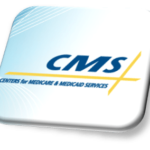 In a decision that many in the healthcare industry viewed as unfair, the Centers for Medicare and Medicaid Services (CMS) recently announced its plans for a hotly contested 1.5% reduction to hospital reimbursement: the cut stands (and involves approximately $11 billion in total).
In a decision that many in the healthcare industry viewed as unfair, the Centers for Medicare and Medicaid Services (CMS) recently announced its plans for a hotly contested 1.5% reduction to hospital reimbursement: the cut stands (and involves approximately $11 billion in total).
In 2012, Congress mandated the CMS recoup monies allegedly lost through erroneous coding for inpatient hospital stays. In 2014, the yearly corrective cuts commenced…at a rate of 0.8%.
Considering the fact that the Medicare Access and CHIP Reauthorization Act (MACRA) kept the reimbursement cut at that 0.8%, it’s no wonder that hospital representatives expressed shock last April when the CMS announced it would seek a larger reduction amount.
Is the CMS “undermining Congress’s intent”?
Tom Nickels is executive vice president at the American Hospital Association. He stated, “CMS is undermining Congress’ intent by imposing a cut that is nearly two times what Congress specified.”
In the CMS’ perspective, however, holding the reduction at 0.8% would’ve meant that the agency would not have recovered the overpayments in time for its 2017 deadline. To be precise, it would’ve left the government $5 million shy of its mark. The CMS further justified ramping up the repayment percentage by pointing to evolving healthcare and economic trends that skewed initial projections.
Although the CMS is accelerating the overpayment recovery, it’s delaying finalization of another proposal. And this postponement will no doubt appeal to many in the industry.
CMS postpones new formula for disproportionate-share payments
The CMS has been nailing down changes to the way it makes disproportionate-share payments (DSH) to “safety-net” hospitals. The formula currently in place rests on how many disabled, Medicaid, and dual-eligible individuals hospitals treat. Instead, the proposed formula would factor in the dollar amounts of charitable care and uncompensated care that hospitals claim on their cost reports to Medicare.
Originally, the new formula was set to go into effect in 2018. But a surge of vehement opposition seems to have been effective in achieving a postponement. Criticisms aimed at the proposal call it inaccurate or as a form of favoring hospitals treating disproportionate numbers of the uninsured. For example, a comment letter by Phyllis Lantos, chief financial officer at NewYork-Presbyterian Hospital, includes this statement:
“Under CMS’s proposed rule, this would result in lower uncompensated care distributions to Medicaid expansion states and would reward non-expansion states with higher uncompensated care distributions. This appears to be adverse to the principles of the Affordable Care Act, sending more dollars to states that have chosen voluntarily to have a higher share of uninsured patients.”
The CMS announced that it will not finalize this formula proposal at the present time, but intends to utilize some version of it in 2021.
What the next year looks like if you’re a hospital awaiting CMS payments
Representing a drop of nearly $400 million from last year, the CMS stated its intent to pay out nearly $6 billion in uncompensated care payments next year. The Affordable Care Act stipulated payment reductions based on certain criteria including the percentage of uninsured patients served.
Still, due to some changes in the Inpatient Prospective Payment System, hospitals are slated to receive $746 million more in 2017 than what they received this year. Those changes include reversing the 0.2% payment reduction as outlined in the two-midnight rule as well as an increase to counterbalance the two-midnight reduction imposed from 2014-2016.
For more information/questions regarding any legal matters, please email [email protected] or call 310.203.2800.